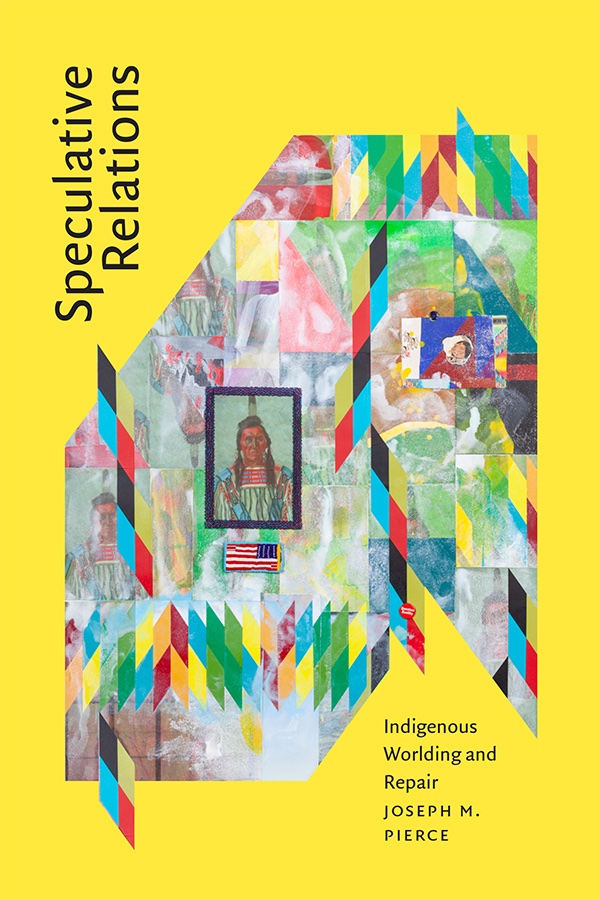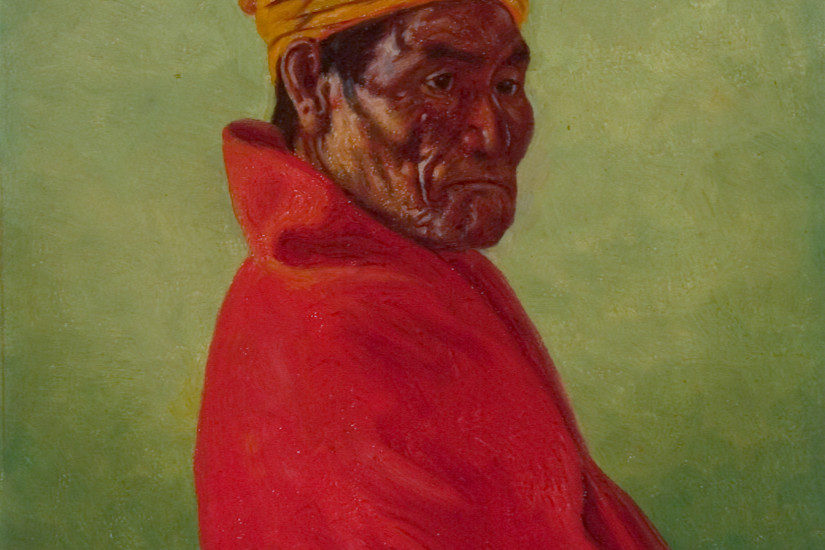Geronimo faces the viewer wearing a luminous red blanket. The arresting swath of color lingers on the eye, a saturated counterpoint to the gray background and the sitter’s deeply wrinkled face. His dark eyes stare directly at the viewer. He had posed for photographs on numerous occasions, but this was the first time he allowed a painter to capture his likeness. That painter was Elbridge Ayer Burbank. Completed in 1897 at Fort Sill, Indian Territory, it was the first portrait done by Burbank of a series commissioned by his uncle, Edward Everett Ayer, then the director of Chicago’s Field Museum. Geronimo was a prisoner at Fort Sill, having surrendered to the US government along with some 30 Chiricahua Apaches in 1866. The army first sent them to Fort Marion, Florida, where they remained for about a year. The group was then transferred to Fort Sill, which is where Burbank, as he put it, “journeyed in search of [Geronimo] on what was to be the first of twenty years of hunting the real Americans for my canvas.”
There are three key strands of history that intersect through the encounter of Geronimo and Burbank at Fort Sill. First, Geronimo’s surrender marked the beginning of the end of the Plains Indian Wars, after which the settler colonial state could begin to imagine itself as having “conquered” the Indians west of the Mississippi and thus fulfilling its Manifest Destiny. Second, Indigenous imprisonment opens a new chapter in US educational policy. Let us not forget that in 1875 Richard Henry Pratt was charged with transporting 72 Indigenous prisoners on the same route Geronimo would take, from Fort Sill to Fort Marion, Florida, where he then undertook his first experiment in Indigenous education (“Kill the Indian, save the man”). Pratt’s experience at Fort Marion informed his later work as superintendent of Carlisle Indian Industrial School in Pennsylvania, which was officially opened on November 1, 1879. We move from the demand for extermination (a rather expensive military enterprise) to the promise of a supposedly more humane (and cheaper) solution to the Indian problem: assimilation through education. Third, the representation of Indigenous peoples, now supposedly domesticated, began to shift from the romanticized noble savage of the early 19th century (i.e., the novels of George Fenimore Cooper and the paintings of George Catlin) to the ethnographic type that was prominent among salvage anthropology in the last quarter of the century. If Geronimo’s surrender marks the culmination of this shift from savage to ward, his portrait represents a similar turn in how Indians were imagined in the settler mind. The Indian becomes a visage on the horizon of disappearance.

